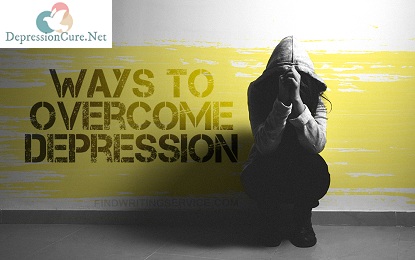What is Paralysis?
A person with paralysis becomes unable to move one or more of his muscles. Any muscle problem or other obstruction never causes paralysis. Still, the paralysis of the nerves and spinal cord that sends messages from the brain to the organs becomes paralyzed.
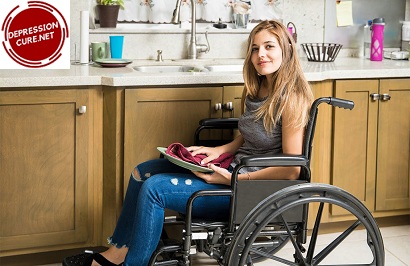
Paralysis can affect a single muscle or group or a large area of the body, all depending on its cause.
Stroke, head or brain injury, spinal cord injury, and multiple sclerosis are among the leading causes of paralysis.
When one of the body’s limbs (arm and leg) is affected, it is called Monoplegia, when one arm and one leg on one side of the body is concerned, that condition is called Hemiplegia.
When the limbs of the lower parts of the body are concerned, it is called Paraplegia, and when the four arms and legs are concerned, it is called Tetraplegia or Quadriplegia.
Many times when the muscles of any part of the body stop or reduce their functioning, the condition is known as Palsy. Like Bell’s palsy, it affects the facial muscles.

Paralysis is diagnosed based on the patient’s symptoms, physical examination, and other tests such as a vein test and scan.
If paralysis is permanent in a person, it cannot be treated, but with the help of some mechanical devices, an effort is made to make the patient’s life as easy as possible.
In some cases, when paralysis affects the legs and arms, neuroprosthesis devices are used. It stimulates the muscles with the help of electric currents, which allows the patient to perform some activity with paralyzed limbs. However, this device is quite expensive and is not suitable for all cases of paralysis.
Click Here To Read: Psychology Test
Symptoms of Paralysis:

The symptoms of paralysis are usually easily recognizable. The paralyzed patient stops feeling any specific organ or a large area of ??the body in his body.
Many times, before an organ becomes paralyzed, it shows signs of numbness or tingling.
Paralysis leads to loss of control over the muscles of the affected parts of the body.
Paralysis can affect the limbs on one side or both sides of the body; moreover, it can affect the upper part of the body or may make the legs paralyzed. Sometimes paralysis affects the entire body except for the eyes.
The following symptoms are usually seen during paralysis.
- Loss of consciousness, or confusion
- Numbness or clumsiness (clumsiness/physical coordination, lack of skill or grace, or feeling awkward)
- Headache (sharp)
- Difficulty breathing
- Drooling in the mouth
- Difficulty in thinking, understanding, speaking, and writing
- Change in mood or behavior
- Loss of bladder or intestinal control
- Hearing loss
- Nausea with or without vomiting
Causes of Paralysis:

Some possible causes by which a person’s body may be permanently or temporarily affected by paralysis. It is usually caused by any injury or damage to the spinal cord. There are many other reasons with which paralysis is associated. Some of these include:
- Stroke
- Trauma
- Poliomyelitis
- Cerebral palsy (cerebral paralysis)
- Peripheral Neuropathy
- Parkinson’s disease
- Botulism
- Spina bifida (a birth disorder in which the spinal cord is improperly closed)
- Multiple Sclerosis
- Guillain-barr syndrome
Additionally, some medications can affect the nervous system.
Paralysis Prevention Measures:

Changing the Condition
Do not let a person stay in the same position in bed for two or three hours continuously, as this can cause blisters or boils on the skin in contact with the bed.
If they are lying on their backs, then their condition should be changed daily within a few hours. An air bed can be used to protect against bed sores.
Due to constant pressure in parts of the body such as buttocks, blood vessels are pressurized, causing boils or blisters. If a person has developed boils due to pressure, then wash them with Savlon at least 2 or 3 times a day with the help of a piece of cotton.

Click Here To Read: Top 25 Ways to be a Good Good Father
Don’t Forget to Exercise
If the paralysis is on one side or a specific part of the body, make sure not to ignore it while exercising. Make sure to use them in exercise to keep the affected muscles in standard shape.
Because according to a simple human tendency, they use muscles that are working correctly and ignore those which do not work correctly. Not using muscle can cause muscle closure. Exercising regularly can help to keep the muscles stimulated.
Avoiding Falls or Accidents
To avoid a fall or other accident, it is essential to take special care of yourself. Once a person loses control of physical activity, his or her risk increases further. The risk can be reduced by placing catchers on the stairs, bathrooms, and patient rooms.
A fall or accident may slow the patient’s recovery or fracture etc. Using a stick or walker as support is also considered an excellent way to reduce falls or other accidents. When the patient is allowed to move freely and perform other activities.
Use Assistive Devices
Assistance may also be required in daily work such as eating, bathing, wearing clothes, etc. Some tools such as Reachers, or Sock aids, etc. help a partially paralyzed person to change clothes himself. Some people who lose control of the bladder need catheterization daily to prevent their bed from getting wet.
They may need to know about the catheter from a professional nurse or doctor, or a trained nurse may have to make arrangements to call home.
Talking and Listen to the Patient
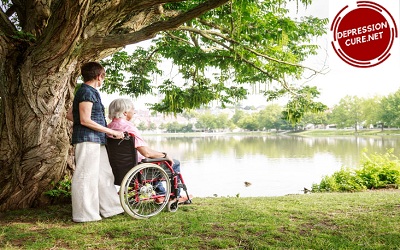
Often, the patient’s ability to speak is reduced after the paralysis affects the face. It may also happen that the patient cannot tell about his pain and needs.
You should also be patient during patient interaction or testing, especially when you are in a hurry. During this time, one should speak slowly with the patient and try to listen to his/her words carefully.
Once you start using this method, it will become more comfortable for you. Try to talk with the patient on every occasion, if possible, try to involve the patient in every conversation of the house.
Always keep the patient familiar with your neighborhood or other types of the latest information that they do not know.
Even if the patient does not respond, sit with them, and talk with them in a loud voice at home and another outside world. All the family members should sit together and talk so that the aspiration of the patient to recover quickly is also created.
Getting advice from a professional psychologist can provide a lot of help to the patient as well as his or her carer.
Keep encouraging the patient and do not give up – the most important thing is that you should always be supportive of the patient and always encourage him towards getting well. Do not lower your attitude yourself, and do not let the patient do it either.
Diagnosis of Paralysis

Paralysis Test/Diagnosis
A diagnosis of paralysis is generally not required if the cause is known, for example, like developing paralysis after a stroke.
If a test is needed to diagnose paralysis, the type of test is determined based on the underlying cause.
The following tests can be done to determine the extent of paralysis-
X-rays
X-rays may be considered the best way to assess damage to the spine or neck.
CT Scan
It is often used to assess the extent of serious injury to the head or spinal cord.
MRI Scan

It is used to detect any damage in the brain or spinal cord.
Myelography
This is a method of examining the fibers of the veins in the spinal cord in more detail. (A particular type of fluid, known as contras dye, is injected intravenously which makes it visible in X-rays, MRIs and CT scans, etc.)
Electromyography
It is often used to diagnose Bell’s Palsy (temporary paralysis on the face).
Treatment of Paralysis:
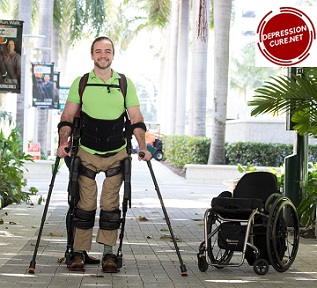
Paralysis is diagnosed based on its underlying causes and symptoms. For example, doctors may recommend:
- Surgery and Amputation if required
- Physical therapy
- Occupational Therapy
- Use of equipment like walking equipment, wheelchairs, braces, and mobility scooters, etc.
- Medications such as Botox and muscle pain relievers if there is muscle spasm paralysis.
?In most cases, the treatment of paralysis is not possible, but for the patient, his health team can recommend a variety of treatments, tools, and strategies to control his symptoms.
Paralysis Risks & Complications:
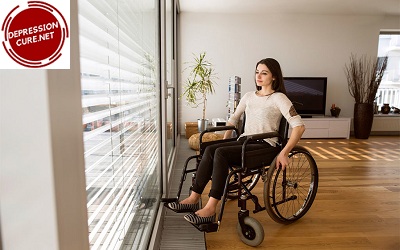
It is common for paralysis to develop other types of health problems in the body. There are many people affected by paralysis, especially those affected by urinary and intestinal incontinence. Apart from this, paralysis also hurts the sexual activity of both men and women.
Pressure ulcers (wounds caused by bed pressure) may also develop on any particular body tissue that remains under bed pressure.
Many people who have paralysis have adverse effects on their mental health, along with other problems.
When a person starts developing paralysis, stress and depression are very common in him. Because of how they can live their life, they are unable to live in that way, and they find it difficult to adjust.
Click Here to Read:- 30 Ways Stress Can Affect On Your Body
What to Eat During Paralysis?
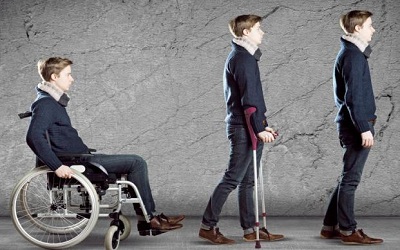
Coconut Water
It is a natural beverage, which is full of all those nutrients and is considered essential for quick recovery in health. These include nutrients, triglycerides, dietary fats, and other health-essential ingredients.
Fish
Omega-3 fat found in some fish is very beneficial in treatment. The veins which have stopped working due to stroke are also considered to be an essential part of omega-3 to revive them.
Chicken
It contains plenty of potassium, in which the body’s day-long potassium can be fulfilled. Therefore, a prescribed quantity of chicken should be included in the food of the paralyzed patient.
Different names, colors, and sizes know vegetables such as eggplant, garden egg, or eggplant. These contain the best and beneficial nutrients for humans.
Avocado
A pear-shaped tropical fruit is rich in health-enhancing nutrients, this fruit is known all over the world for low calories and high nutrients.
Cauliflower
Lack of nutrients in the body can be accomplished by consuming cauliflower.
Broccoli
This can be called a power pack of nutrients. It contains fiber, vitamin C, vitamins A, and B6), potassium, and antioxidants, which are very important for digestive activities.
Cabbage
This is called the storehouse of natural antioxidants.
Spinach
Iron, vitamins (K, A, C, and B2), folic acid, and other mineral substances are found in plenty in spinach.
Radish
It also contains many essential substances that cure a paralytic patient.
Note: Depression Cure does not provide any type of medical advice, diagnosis, or treatment.




